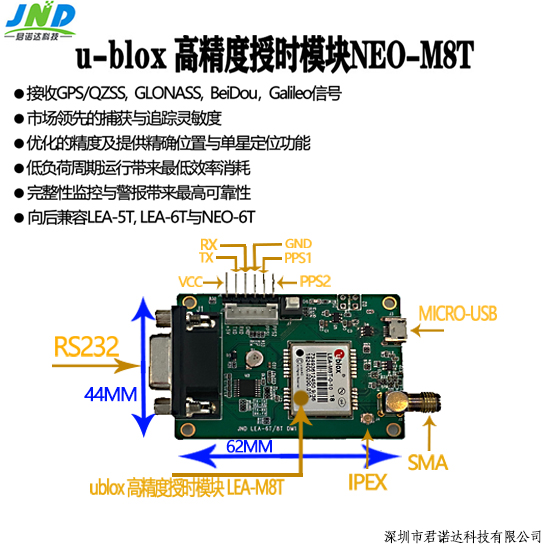Self-driving cars, once the stuff of sci-fi blockbusters, are making their way into the homes of ordinary people. Fresh off the boat, people are beginning to objectively understand self-driving technology and demand that it become a safe mode of transportation. A sharp environment sensing system is a prerequisite for the safe driving of self-driving cars, and high-precision positioning is an indispensable basic technology.
On May 7, 2019, Song Ziwei, who has worked as the main PM Cadillac, Jeep all-series, Ford all-series models Sync3. navigation product development, and is now the manager of vehicle-side high-precision positioning solution of Chance Position, teaches Why Autonomous Vehicles Need High-Precision Positioning? online open course. The following content is edited based on Song Ziwei's sharing in the open course.
Introduction
1. What is autonomous driving?
2. Bottlenecks in the development of positioning technology for autonomous driving
3. The basic role of high-precision satellite positioning in automatic driving
4.Introducing Chance Position's high-precision satellite positioning products.
Course Record
I. What is automatic driving?
At present, the four major development trends of automobiles are: electrification, intelligence, networking and sharing. Among them, intelligence is closely related to high-precision positioning.
First, briefly introduce the definition of the level of automatic driving. From no driver assistance to fully automatic driving, it is divided into five levels: L1, L2, L3, L4, L5. most of the current assisted driving functions are between L1 and L3. L1, L in fact, level 2 is mainly human-controlled, but the sensors and some on-board control modules will help the driver to perform some of the driving functions; but from L from level 3 onwards, there will be a transfer process between the driver and the vehicle, or the driver will be driving ** handed over to the vehicle, or when the vehicle finds that it is unable to drive itself automatically, it will be handed over to the driver for the right of control.
Currently, the most cutting-edge autonomous driving features are mainly between L2 and L Despite this L3.There is still some controversy within the industry as to what kind of autonomous driving features need to be implemented, but it's clear that L2 has reached mass production levels. So how effective are they on the road?
According to incomplete statistics, since 2016, eight self-driving road traffic accidents have occurred, four of which occurred in L2 self-driving cars The reason for this is also that L2 self-driving cars are the only models currently shipped in mass production.
The causes of accidents are also varied. From perception, decision-making to control, any part of the process can lead to traffic accidents. Perception is a very important module that helps the vehicle determine its current location and thus get a comprehensive understanding of the current environment.
If the car can locate its precise position and combine it with high-precision maps, it will make a very accurate judgment of some static or quasi-static information in the current overall driving environment. On this basis, the automatic driving decision-making system can make a correct judgment and then control the next behavior of the vehicle.
Second, the development of automatic driving positioning technology bottlenecks
The high-precision positioning technology in automatic driving can be divided into absolute positioning and relative positioning. The common LiDAR, camera, ultrasonic radar and millimeter wave radar belong to the category of relative positioning; GNSS combined with global satellite navigation system positioning IMU inertial sensors integrated positioning can obtain the vehicle's latitude and longitude information and the current attitude information, reflecting the vehicle's absolute position in the earth's coordinate system, which belongs to absolute positioning.
However, each class of positioning sensors has its own advantages and very obvious defects.
For example, the measurement accuracy, detection distance and final results of LiDAR are very guaranteed, but the cost is high and the parts are easy to wear out. Also, it tends to clog up during use and is unable to recognize colors, text and patterns, leading to weak volume production capabilities. Musk also dissed LiDAR at Tesla's recent press conference.
Another example is millimeter wave radar. While widely used in current self-driving solutions, the problem with this is that it has a small detection angle and requires the installation of a large number of millimeter-wave radars in order to detect and accurately locate the overall environment around the vehicle. The program also suffers from high cost.
Currently, many parking assistance features are using ultrasonic radar solutions. However, the problem is that it has a detection distance of up to 3 meters and low accuracy.
The visual localization scheme is mainly realized by cameras, and it is the more mainstream localization scheme in current autonomous driving technology. The main advantages of this scheme are low cost, recognition of text color and pattern, etc.. However, the effect of visual localization will be affected by the ambient light, and the localization effect is also worse in the case of rain, snow and fog.
GNSS satellite positioning and inertial navigation are widely used in vehicle navigation.The main advantages of GNSS are low cost and high accuracy. At present, based on the differentiated services of Chance Location, GNSS dynamics can reach dynamic centimeter level.
Inertial navigation is commonly used in the industry GNSS integration is because the combination of inertial navigation, GNSS when the signal is lost, the vehicle can still be accurately positioned. However, since inertial navigation is realized through computation, the cumulative error will be more pronounced over time, and it needs to get a more accurate initial position to calculate. Generally, it does not exist as a stand-alone navigation sensor and is usually used in conjunction with other sensors.
Each of the above sensors has its own advantages and disadvantages, and it is difficult to find the best program that takes into account all aspects in the actual application process.
Third, the basic role of high-precision satellite positioning in automatic driving
Objectively speaking, satellite positioning is a technical solution with high availability, in addition, compared with other sensors, the cost is relatively low.
GNSS positioning technology has a long history of application in the automotive field. in the 1980s, the navigation function of the car is a separate GPS to achieve constellation positioning, but due to fewer satellites, the positioning accuracy is about 50 meters; later, the introduction of inertial navigation sensors, to ensure the positioning continuity, the accuracy is about 10 meters, which can be used to achieve the tracking of the vehicle, based on the analysis of the trajectory monitoring; with the development of the satellite constellations, there are four major in the sky satellite constellations, the number of satellites has increased, each satellite constellation has at least 2~3 different frequency bands, and the satellite positioning accuracy has increased to about 5 meters.
With the development of vehicle V2X applications as well as L3, L4, and L with level 5 autonomous driving, the automobile's requirement for positioning accuracy is further increased - it must be within 1.5 meters or even 1 meter, so how to achieve it?
This requires the introduction of single-frequency RTK (carrier phase difference) technology. Positioning based on this technology has an accuracy of up to 1.5 meters in complex environments; in open environments, the accuracy can be up to 50~80 cm. after L3-level autonomous driving, multi-frequency RTK is needed to increase the positioning accuracy to centimeter-level technology.
So what kind of technology is RTK?
First, a brief description of the RTK positioning principle. One of the main prerequisites for using this technology is the establishment of a satellite observatory (also known as a reference station) on the ground. Its position information is fixed and known. When it receives satellite signals, it can obtain satellite positioning results. The difference between the satellite positioning result and its known position is the satellite positioning error. This error result can be transmitted to surrounding vehicles in the form of a webcast. The vehicle positioning system reduces the error so that it can obtain highly accurate position information.
High-precision GNSS positioning is not affected by the environment, and can work normally in the case of rain and snow roads, hazy roads, lane-less routes, desert grasslands, and other situations where the positioning sensors do not work.
In addition, high-precision GNSS positioning and improved accuracy maps can also realize many intelligent driving assistance functions, such as reminding drivers of sharp turns, ramps, intersections and some known accident points, which brings better driving experience; Meanwhile, compared with some visual positioning solutions, high-precision GNSS positioning does not need to download a large amount of map and point cloud data, and does not consume too much system resources for data processing, low computational cost.

Ltd. specializes in high-precision GNSS modules and wireless communication products, technology development and application promotion service providers, relying on the wireless communication technology in the field of R & D and promotion of experience, JUNODA set up a team with a wealth of experience in hardware and software development technology, aimed at domestic and foreign OEM / ODM customers and system integrators to provide high-quality, high-performance wireless modules and applications! We aim to provide high-quality, high-performance wireless modules and application programs to OEM/ODM customers and system integrators at home and abroad, and create long-term value for customers!
The company mainly provides integrated antenna module, dual-frequency high-precision module, single-frequency high-precision module, thousand-seeking high-precision module, Zhongke micro-positioning module, U-BLOX positioning module, SICOM communication module, inertial navigation DR module, UWM GNSS module, RTK differential module, 4G communication module and high-precision antenna, etc., the products are sold well in Beijing, Shanghai, Shenzhen, Guangdong, Jiangsu, Zhejiang, Sichuan, Hunan and other parts of the country. Our GNSS modules are widely used in many application fields, such as drones, vehicle security monitoring and dispatching, automatic bus stop announcement, DVR, car DVD navigation, GPS electronic dog, synchronized timing, high-altitude balloon monitoring, engineering machinery, industrial automation, etc. In the field of wireless communication products, the company is closely involved in the field of wireless communication, such as RTK differential module, 4G communication module and high-precision antenna.
In the field of wireless communication products, the company follows the latest development of international communication technology, introduces and acts as an agent for wireless communication modules that meet the market demand, and the products have a comprehensive layout from 2G, 3G, 4G, and are widely used in financial electronic payment, vehicle remote control, remote advertising information, repeater monitoring, mobile Internet terminals, smart home, remote medical care, network testing, enterprise information management, anti-theft alarm, Remote video transmission, intelligent meter reading, mobile computing, network navigation, voice phone, wireless gateway and other fields. Focused areas include video surveillance, network optimization, routers, POS and other M2M industry applications.
If you need to consult, please contact online customer service!














